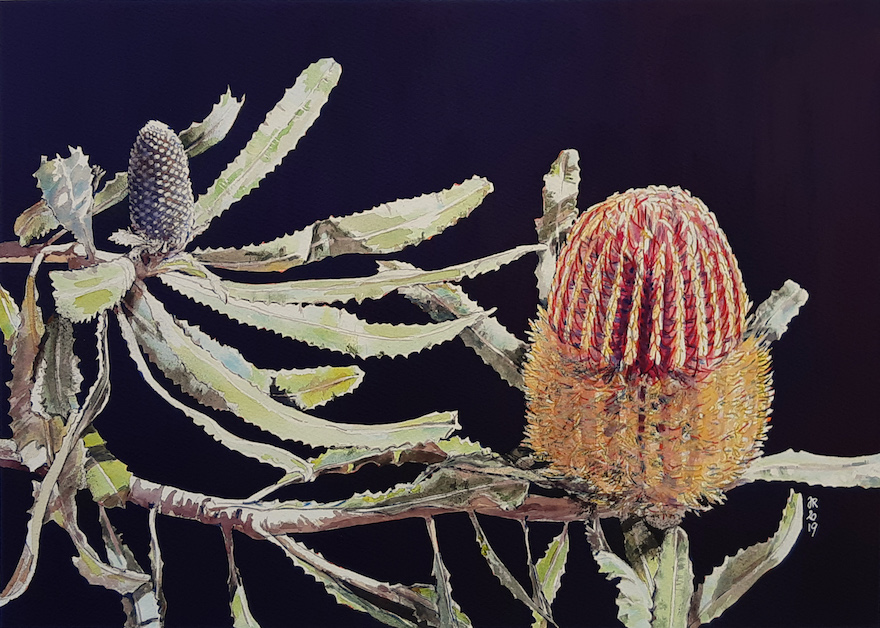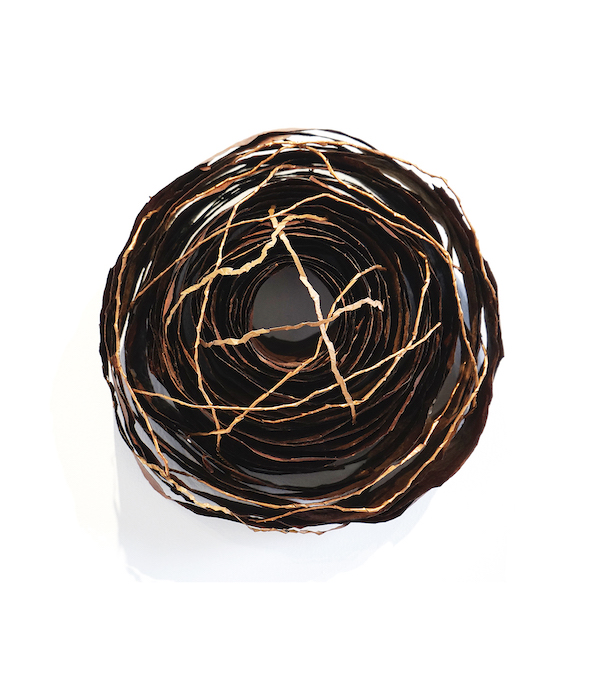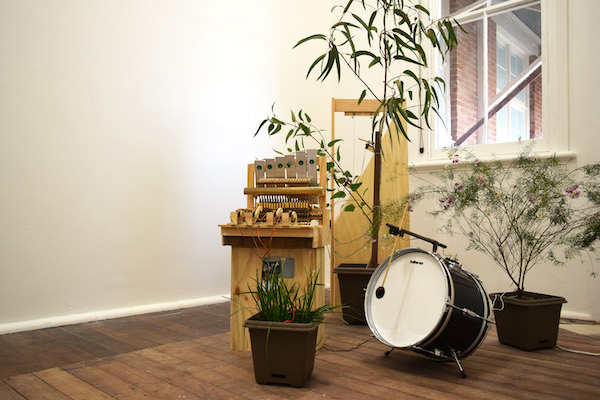Various artists, ‘Wildflower State’ &
Claire Gillam, ‘Botanic Philharmonica’ ·
Midland Junction Arts Centre ·
Review by Craig McKeough ·
Botanical themes are among the most prevalent in the history of visual expression. Depictions of flowers and plants can be found on ancient Egyptian papyrus and ceramics, through Medieval and Renaissance textiles and paintings, and burst into life in colourful Impressionist and Post-Impressionist masterpieces.
There are good reasons for this. On a most basic level, humans have a dependence on plants for our own existence – for food, shelter and regulating the air we breathe. But on another, less tangible level, plants are a source of constant inspiration with their extraordinary variety of form and colour, their often awesome scale, and their unsurpassed beauty.
In Western Australia, we have always celebrated our plant life, even if we have tended to all but destroy it in the process – the exploitation of our hardwood timbers for building materials, including as road paving and railway sleepers across the British Empire in the early years of the Swan River Colony, being a prime example.

But WA is also the Wildflower State, a moniker that we once proudly displayed on our car licence plates, and that claim is no empty boast. Despite the constant threat of human encroachment, this State boasts an array of many thousands of species unique to this corner of the world.
That title has been borrowed for the main exhibition now showing at Midland Junction Arts Centre (MJAC). “Wildflower State” is a part of Mundaring Arts Centre’s “What on Earth” initiative, a celebration of the botanical world in conjunction with the Art Gallery of WA, Lawrence Wilson Art Gallery, King Street Art Centre and Kings Park Festival.
Coordinated by noted WA artists Tony Jones, Jude van der Merwe and Angela McHarrie, “Wildflower State” brings together 34 diverse practitioners whose 70 pieces fill MJAC’s East and West galleries.

There is a diversity of styles and media – artists have drawn, painted, stitched, printed, wrapped and rubbed. Some have adopted a traditional, realistic style of representing botanical specimens while others have chosen to depict the intersection of plant life with human existence in more abstract ways.
The variety reflects the extraordinary range of plants endemic to this part of the world. Some are showy and vibrant in their colour, such as Jeanette Garlett’s joyful celebration of banksias and grevilleas, Judy Rogers’ stunningly delicate watercolours on a stark black background, and Bethamy Linton’s mesmerising ink and watercolour xanthorrhoea.
Others are understated and subtle, and are more about the line and form, such as Fiona Harman’s striking monochromatic banksia in charcoal (pictured top), Holly Story’s earthy plant prints and Madeleine Clear’s rich tones of charcoal and pindan ochre depicting the aftermath of fire.
The exhibition is united most effectively by the decision to have almost all the artists submit works on paper of similar size, and hanging them unframed. (There are also lovely small sculptural pieces by Monique Tippett and Sarah Elson, which work in harmony with the art on paper).
“Wildflower State” is a worthy homage to WA’s unique flora and, as Tony Jones highlights in his foreword to the program, a timely reminder of the need for humans to reconsider the priority we place on protecting it.

Showing in conjunction with “Wildflower State” is “Botanic Philharmonia”, featuring Claire Gillam’s intriguing multi-media installation which explores the notion of communication between plants and humans.
Her Plant Band connects living native plants to robotic instruments, which play their own brand of percussion triggered by measurements of the plants’ sap, water content and rate of photosynthesis. Gillam has fun with the concept, naming her trio of band members after plant entities from the sci-fi and fantasy world, including Fangorn from The Lord of the Rings, Jabe from Doctor Who and Audrey II from Little Shop of Horrors.
There’s more of the gentle Fangorn than Audrey’s sinister overtones in this installation. It’s a quirky if discordant sound sculpture that asks interesting questions about our relationship with plant life and gives new pause to question what our garden plants might be hearing when we talk to them.
“Wildflower State” and “Botanic Philharmonia” run until October 12.
Pictured top: Fiona Harman, “Kangaroo Paw”, 2019, charcoal and ink on paper, 29.5 x 42cm
Like what you're reading? Support Seesaw.





